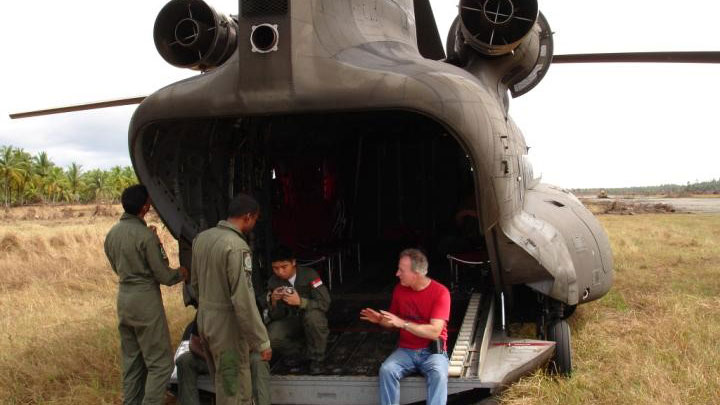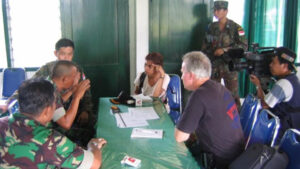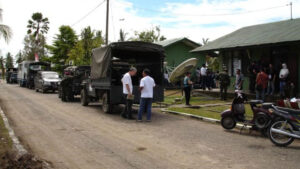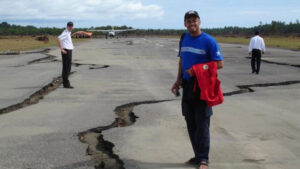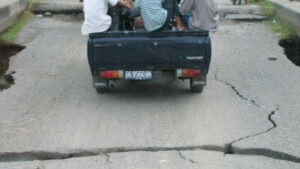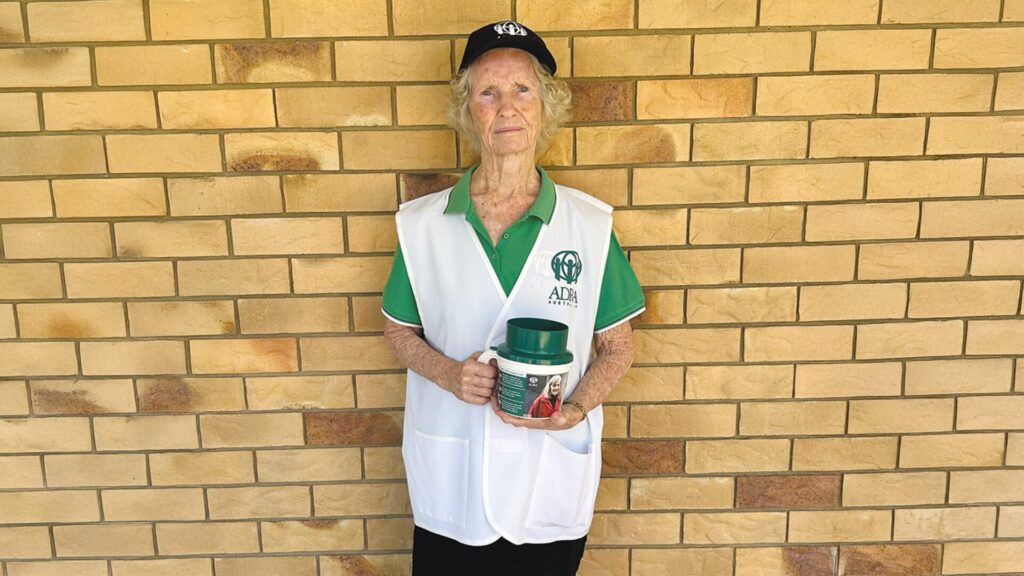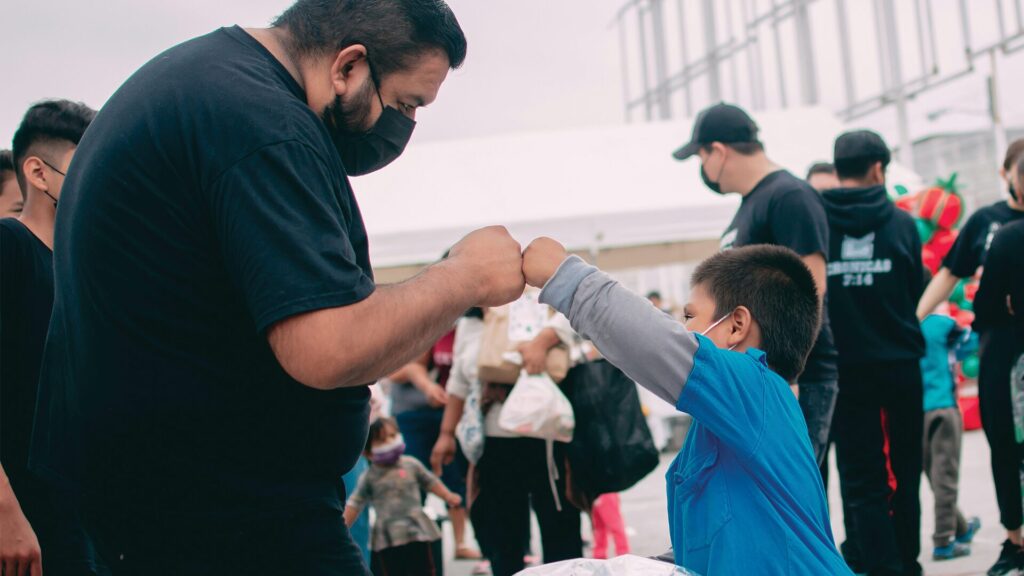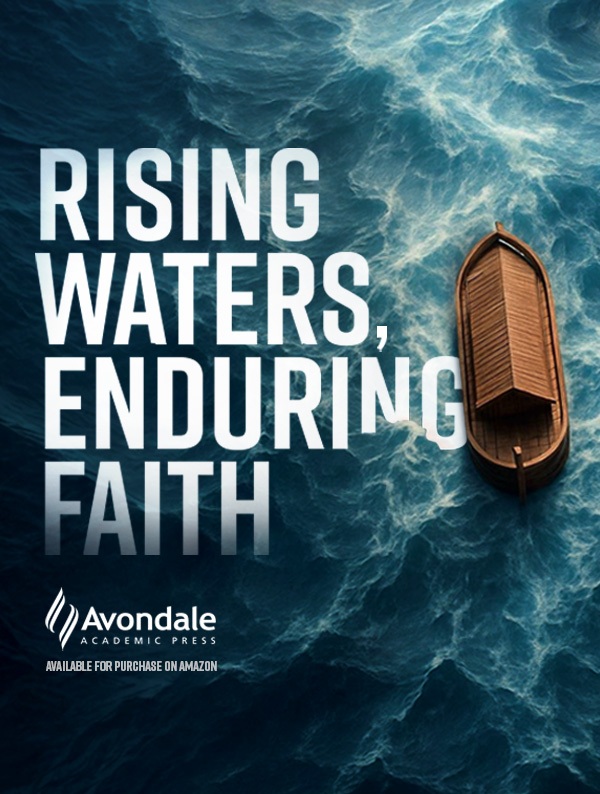The events I’m about to relate may be interpreted in a number of ways, dependent on your faith and beliefs. For me, it was nothing less than a series of miracles!
In the aftermath of the devastating 2004 Indian Ocean tsunami, what unfolded was an extraordinary journey of humanitarian assistance. As a disaster management specialist with the Adventist Development and Relief Agency (ADRA), I found myself navigating through a landscape of unprecedented chaos and urgent need.
The situation in north-western Sumatra was dire. The massive earthquake had unleashed a tsunami that devastated coastal communities, leaving widespread destruction in its wake. My mission was simple yet critical: identify where help was most desperately needed and find a way to get there.
Meulaboh stood out as a community in a critical condition. With approximately 55,000 residents and nearly impossible access—damaged coastal roads and airport, and a destroyed seaport—it was clear this town needed immediate attention. But getting there would prove to be a challenge that seemed almost insurmountable.
My first obstacle was transportation. At the Medan airline sales counter, the atmosphere was frantic. Travellers were desperately seeking ways to reach their destinations in the tsunami’s aftermath. When I was told the next available flight to Tapaktuan, the nearest operational airport to Meulaboh, was 10 days away, my hopes sank. Then came an unexpected twist. A journalist from the Boston Globe approached me with a chartered flight option—but at the steep price of $1700 a seat. When I mentioned needing two seats for myself and Rully, my translator, she made a quick call to confirm availability with the charter company.
Just as we were discussing the details, her phone rang. A Japanese journalist who’d heard of the charter flight, offered $1800 for a seat. What followed was an impromptu auction that escalated quickly. We were bidding back and forth, the price climbing to $2400. In that moment of mounting frustration and uncertainty, a young man tapped me on the shoulder. and said, “I have three tickets to Tapaktuan tomorrow morning on the commercial flight; would you like two?” Without hesitation I said “Yes!” We proceeded to the airline desk; the transfer of two tickets was made at a total cost of $200!
At 6 am the next morning I was aboard a SMAC airline scheduled flight to Tapaktuan with Rully and the holder of the third ticket, who was travelling to his home village located on the west Sumatran coast to look for his family. On landing at Tapaktuan and exiting the airport building, we encountered absolute chaos as people sought ground transport to travel north along the tsunami-ravaged coastline, all in search of families. My “ticket friend” said to follow him, he would help us get transport as he was heading in the same direction as us. He found a small Suzuki van already full of people, however we managed to squeeze in as some people moved to hold on in the doorway. We headed north on a coastal road where evidence significantly increased of the shaking of the ground that had moved bridges, and the force of the tsunami waves had eroded the road. About 150 km north of Tapaktuan the driver stopped and announced he was going no further due to the dreadful condition of the road. My “ticket friend” got out and said he was heading to his village on foot. We wished each other well.
Rully and I stood on the side of the road estimating it was about 40 km to Meulaboh and discussing walking when a large four-wheel drive vehicle stopped, and as Rully conversed with the occupants in Bahasa Indonesia, I learned the extraordinary detail: one of the passengers had studied with Rully at a university more than 2500 kilometres away, seven years earlier and happened to be passing at that precise moment and recognised him!
The family was heading to Meulaboh and knew exactly where we needed to go. They took us directly to the military compound, helping us navigate through the devastated landscape. We quickly registered with the local military commander who was coordinating the disaster response, becoming the first NGO to do so. We conducted a rapid assessment that identified critical needs.
I was carrying a satellite phone to report back to the ADRA office in Medan. Unfortunately, due to heavy cloud cover and intermittent rain, I was unable to establish communication via the phone. I decided to head back to Medan as soon as possible to provide a verbal report and start relief operations for Meulaboh. The Singaporean air force had arrived in Meulaboh a day before I did and had established a base. I was informed they could fly me by helicopter to Medan when the next flight went. I travelled out to the airport and spoke with Singapore air force personnel, who were not sure when the next flight would leave. As I talked with them, a small plane was circling above the airport and then came in to land on what was a badly damaged runway. I walked towards the plane as it came to a halt about 300 metres from me. The pilot stepped out of the plane and headed my direction. I asked him how long he planned on being there. He replied, “five minutes.” I asked if Rully and I could hitch a ride with him back to Medan, to which he said yes.
That evening in Medan, I filed my assessment report with recommendations for ADRA’s initial response. By the next morning ADRA Denmark had confirmed funding from the Danish government and later that same day I returned to Meulaboh in the same plane, carrying one and a half tonnes of relief supplies for the people of Meulaboh. This was the beginning of an extensive and large operation there for the next few years, initially with immediate relief work followed by recovery and rehabilitation operations.
Looking back, I’m humbled by how a series of seemingly random incidents enabled the provision of critical assistance to a community in desperate need. I strongly believe God played a part in this succession of events, facilitated by the collective human spirit of helping those in need.
This reflection was written by Robert Patton, ADRA’s first responder to the Boxing Day Tsunami that hit 14 countries and killed more than 200,000 people.

